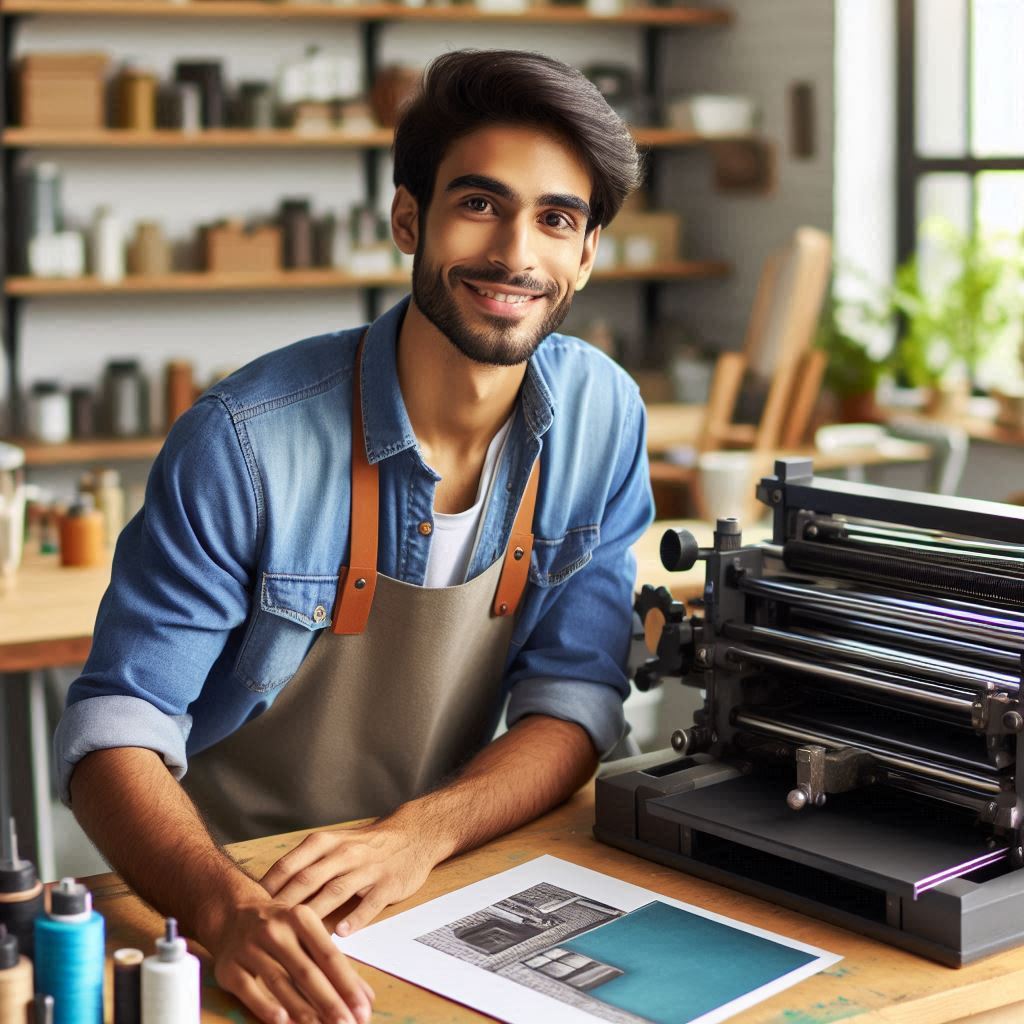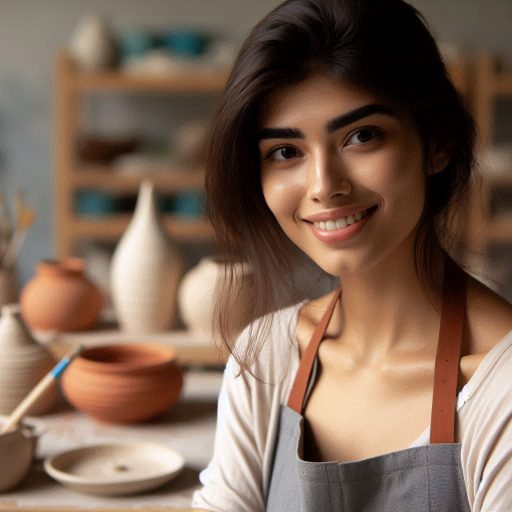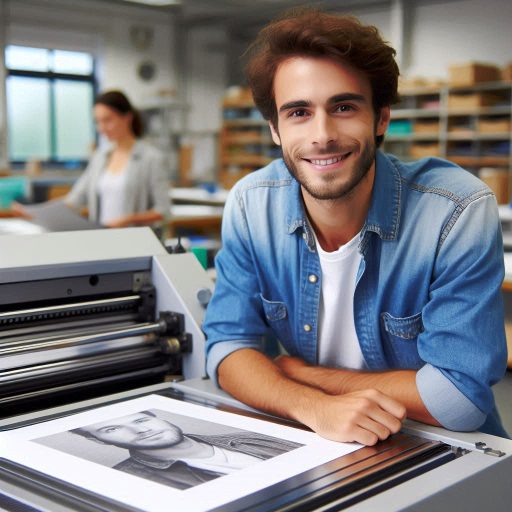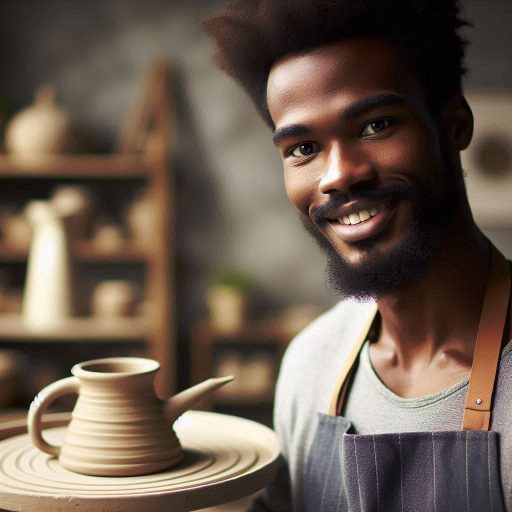Introduction
Printmaking is a powerful artistic technique that has long been celebrated for its versatility.
It allows artists to create multiple copies of their work, expanding their creative reach.
However, despite its rewarding potential, printmaking can be a challenging process.
Artists, whether beginners or experienced, often encounter common pitfalls that can hinder the final outcome.
Avoiding these mistakes is crucial to producing high-quality prints and enhancing your printmaking skills.
One of the most frequent errors in printmaking is not properly preparing the printing surface.
A poorly cleaned or unprepared surface can cause ink to apply unevenly, resulting in smudged or distorted prints.
Always ensure your plate or screen is clean and smooth before applying ink.
Applying too much or too little ink is a mistake that often leads to disappointing results.
Too much ink can cause bleeding and blurred lines, while too little ink can make the print appear faded.
Mastering the correct inking technique takes practice, but it is essential for a successful print.
Incorrect alignment of paper on the printing plate can ruin an otherwise perfect print.
Misalignment leads to skewed or double images.
To avoid this, take the time to carefully position the paper and use registration marks if needed.
Not all paper types are suitable for printmaking.
Using the wrong paper can result in ink absorption issues or tearing.
Always select paper that complements the printmaking technique you‘re using, whether it‘s etching, screen printing, or lithography.
By being mindful of these common mistakes, you can refine your skills and produce more successful, polished prints.
Not Properly Preparing the Printing Surface
The importance of preparing the printing surface by cleaning it thoroughly
Proper preparation of the printing surface is crucial to achieving quality prints.
Cleaning the surface thoroughly ensures smooth and consistent results.
Transform Your Career Today
Unlock a personalized career strategy that drives real results. Get tailored advice and a roadmap designed just for you.
Start NowDust, oils, or residue on the printing surface can cause imperfections in the final print.
By cleaning the surface well, you minimize these risks and enhance the clarity of your design.
The choice of materials also significantly impacts the print quality.
Using the wrong material for the technique can lead to poor results.
For example, certain paper types are better suited for different printmaking techniques like etching, lithography, or screen printing.
Choosing the right type ensures the ink transfers evenly and the details appear sharp.
The use of appropriate materials such as paper or fabric for different techniques
Fabric, on the other hand, requires a different approach compared to paper.
When working with fabric, it‘s essential to consider its texture and absorption rate.
Some fabrics may absorb more ink, affecting how the image looks.
Using fabric-specific inks or additives helps maintain the design‘s integrity.
Failing to properly prepare the printing surface can result in wasted materials and disappointing prints.
Taking the time to clean, select the right material, and consider your printing technique leads to better outcomes.
A well-prepared surface contributes to the longevity and durability of your prints.
It reduces smudging, ink bleeding, and unwanted texture, ensuring your artwork looks professional.
Paying attention to these details before printing prevents frustration and improves overall results.
In fact, preparing the printing surface by cleaning it and using the appropriate materials is essential.
It allows the ink to transfer smoothly, ensuring high-quality, consistent prints.
Avoiding these common mistakes leads to better, more satisfying printmaking experiences.
Read: Ceramic Art for Beginners: Getting Started
Using Too Much Ink or Paint
The importance of using the right amount of ink or paint to avoid over-saturation
Using too much ink or paint in printmaking can lead to poor results.
Transform Your Career Today
Unlock a personalized career strategy that drives real results. Get tailored advice and a roadmap designed just for you.
Start NowOver-saturation often causes smudging and a lack of clarity in prints.
It‘s important to use the right amount of ink or paint for crisp, clear images.
Overloading your surface will blur details and reduce the quality of your print.
To avoid over-saturation, pay attention to how much ink you use.
Applying a thin, even layer is essential for maintaining clean edges.
Too much ink can spread beyond the desired areas, making the final print look messy.
It’s better to start with less ink and gradually add more if needed.
The consistency of your ink also plays a critical role in print quality.
Thick, gloopy ink will not spread evenly across the surface.
Thin ink, on the other hand, may not transfer well onto the paper.
Achieving the right balance is crucial.
Tips on how to achieve the right consistency for printing
A helpful tip is to roll out the ink on a flat surface before applying it.
This step helps in evenly distributing the ink and avoiding clumps.
The ink should stick to the roller without dripping or pooling.
If the roller slips or slides instead of rolling smoothly, you‘re using too much ink.
Test your ink or paint on a scrap piece of paper before starting your final print.
This step helps you see how the ink spreads and if any adjustments are needed.
Correct ink usage improves print quality and ensures sharp, professional-looking results.
Read: Printmaking Techniques: Screen Printing Basics
Neglecting to Test Prints
The significance of creating test prints before starting the actual printing process
Testing prints is a crucial step in the printmaking process.
Transform Your Career Today
Unlock a personalized career strategy that drives real results. Get tailored advice and a roadmap designed just for you.
Start NowSkipping this step often leads to avoidable errors.
Creating a test print before starting the actual work can save time and materials.
Test prints allow you to catch small mistakes that may go unnoticed in the initial setup.
For example, you can identify issues like uneven ink distribution, misaligned plates, or poor paper quality.
These mistakes are easier to fix early, ensuring the final product is flawless.
Test prints also offer insight into how your artwork will translate to print.
The design may appear differently on paper compared to the original concept.
A test run helps you assess how details, lines, and colors translate into print.
You can adjust accordingly before committing to the full run.
How test prints can help identify and correct any mistakes before finalizing the artwork
Moreover, test prints provide an opportunity to experiment with different techniques.
You can try varying ink amounts, pressure, and drying times.
These variations can significantly impact the outcome of your print.
Testing lets you find the perfect combination for the desired effect.
Skipping test prints increases the risk of irreversible mistakes in your final work.
By taking the time to test, you ensure each print meets your expectations.
Ultimately, this saves you from wasting resources and time on flawed prints.
Testing is not just a recommended step‘it is essential.
Neglecting this vital process can compromise the quality of your prints.
Always prioritize test prints to avoid errors and produce high-quality results.
Read: Finding Inspiration for Your Ceramic Art
Transform Your Career Today
Unlock a personalized career strategy that drives real results. Get tailored advice and a roadmap designed just for you.
Start NowIgnoring Safety Precautions
The importance of following safety guidelines when working with chemicals, inks, and tools
Ignoring safety precautions in printmaking can lead to serious accidents and health issues.
It is crucial to follow safety guidelines when working with chemicals, inks, and tools.
Printmaking involves hazardous materials, such as solvents, acids, and sharp tools.
Failing to handle these materials correctly increases the risk of injury or long-term health problems.
Proper ventilation is essential when working with chemicals.
Without it, harmful fumes can accumulate and cause respiratory issues.
Ensure your workspace has good airflow to reduce exposure to toxic substances.
Wearing protective gear is another critical safety measure.
Gloves, goggles, and aprons protect your skin and eyes from harmful chemicals and accidental spills.
Suggestions on how to protect oneself from potential hazards in the printmaking process
When handling sharp tools like carving knives or cutting blades, it is important to use proper techniques.
Never rush through tasks, and always cut away from your body.
This minimizes the risk of cuts or other injuries.
Keep your tools sharp and well-maintained to avoid accidents caused by slipping or improper use.
Organizing your workspace also helps in reducing accidents.
Keep your tools and materials neatly arranged to avoid confusion and spills.
Store chemicals in properly labeled containers, and follow disposal guidelines to prevent environmental harm.
In essence, prioritizing safety in printmaking prevents accidents and long-term health risks.
Follow all safety guidelines, use protective gear, and keep your workspace organized.
Taking these steps ensures a safer, more productive printmaking experience while protecting yourself from potential hazards.
Read: Finding Inspiration for Your Ceramic Art
Transform Your Career Today
Unlock a personalized career strategy that drives real results. Get tailored advice and a roadmap designed just for you.
Start Now
Rushing the Drying Process
One of the most common mistakes in printmaking is rushing the drying process.
Proper drying is crucial for achieving high-quality prints.
When prints are not allowed enough time to dry, the ink can smudge, bleed, or cause unintended effects on the paper.
This compromises the final appearance and integrity of your artwork.
Common Mistake
Skipping or hastening the drying phase can result in uneven ink distribution and distorted colors.
Inadequate drying can lead to frustration as the final prints may not match your expectations.
The quality of your printmaking can significantly suffer if you fail to give each layer sufficient time to dry.
Patience is essential for achieving clear, crisp, and vibrant prints.
Tips on Speeding Up the Drying Process
To speed up the drying process without compromising quality, consider using a few effective techniques.
First, ensure proper ventilation in your workspace.
Good air circulation helps inks dry faster.
Use fans to enhance airflow around your prints.
Second, apply gentle heat with a heat gun or hairdryer.
Keep the heat source moving to avoid overheating and damaging the paper.
Additionally, consider using fast-drying inks or additives specifically designed for this purpose.
These products can help reduce drying times while maintaining the desired quality.
If possible, avoid stacking wet prints.
Instead, allow them to dry flat on a clean, non-stick surface to prevent sticking and smudging.
By applying these strategies, you can effectively manage the drying process.
Avoid rushing, but use these methods to ensure your prints dry more quickly and maintain their quality.
Transform Your Career Today
Unlock a personalized career strategy that drives real results. Get tailored advice and a roadmap designed just for you.
Start NowProper drying is essential for achieving professional, polished results in printmaking.
Failing to Clean Tools and Equipment
The negative consequences of not cleaning printing tools and equipment after use
In printmaking, cleanliness is crucial.
Neglecting to clean tools and equipment after use can lead to several issues.
Residual ink and chemicals can dry and harden on tools, making them difficult to use.
Over time, this buildup can damage expensive equipment and reduce its efficiency.
Dirty tools can also transfer contaminants to future prints, causing inconsistencies and unwanted marks.
This contamination can ruin entire batches of work, leading to wasted time and materials.
To prevent these issues, adopt regular cleaning routines.
Start by wiping off excess ink or paint from tools immediately after use.
For ink rollers and brayers, use appropriate solvents or cleaners to remove residue.
A simple solution for water-based inks is warm soapy water.
Rinse thoroughly and dry completely before storing.
For metal tools and plates, use a soft cloth and a gentle cleaner to avoid scratching.
For stubborn ink, you might need a specialized cleaner designed for the type of ink used.
Avoid abrasive scrubbers as they can damage surfaces.
Easy and effective cleaning methods to maintain the longevity of tools
Clean screens and squeegees with a mild detergent and warm water.
Ensure they are completely dry before storing to prevent mold growth.
Regularly inspect and maintain your tools.
Replace worn-out or damaged parts promptly.
Proper cleaning and maintenance not only extend the life of your tools but also ensure high-quality prints.
Transform Your Career Today
Unlock a personalized career strategy that drives real results. Get tailored advice and a roadmap designed just for you.
Start NowAdopting these practices will enhance your printmaking process and preserve the integrity of your equipment.
Keeping your tools clean is an investment in both the quality of your work and the longevity of your equipment.
Overlooking the Importance of Registration
In printmaking, registration is a crucial process.
It ensures that each layer of a multi-colored print aligns perfectly with the others.
Without accurate registration, prints can appear misaligned or blurry, diminishing the overall quality of the artwork.
Define Registration in Printmaking and Its Significance
Registration in printmaking refers to the precise alignment of different color layers on the same print.
This process is essential for creating multi-colored prints where colors need to overlap accurately.
Proper registration ensures that the final print maintains its intended design and visual impact.
Any misalignment can cause colors to shift or blur, resulting in a less professional finish.
Techniques and Tools for Accurate Registration
- Registration Marks: Use small, precise registration marks on your print plates.
These marks help align the layers accurately during printing.
Ensure they are placed in consistent positions so they can be easily matched across layers. - Registration Jig: Employ a registration jig to hold your paper and plates in place.
This tool helps maintain consistent alignment for each print run.
It can be especially useful for repetitive tasks and maintaining precision. - Guide Sheets: Create guide sheets with gridlines or alignment marks.
Place these sheets underneath your print paper to help position each color layer accurately.
This method provides a visual reference for ensuring proper alignment. - Print Testing: Conduct test prints to check registration before committing to your final print.
Testing helps identify any alignment issues early in the process, allowing for adjustments before producing the final prints. - Careful Placement: Pay close attention when placing your print plates on the press.
Ensure they are correctly aligned with the registration marks and that they fit snugly into place.
By focusing on registration, you can enhance the quality and precision of your printmaking projects.
Proper registration prevents costly mistakes and ensures that each print accurately reflects your artistic vision.
Not Experimenting with Different Techniques
Printmaking is a versatile art form that thrives on creativity and innovation.
One common mistake many artists make is sticking to the same technique without experimenting.
By not exploring different methods, artists miss opportunities for growth and fresh perspectives.
Encouraging Artists to Explore and Experiment with Various Printmaking Techniques
Artists should be encouraged to explore a range of printmaking techniques.
Each method, from traditional relief printing to modern screen printing, offers unique possibilities.
Trying techniques like etching, lithography, or monotype can open new avenues for expression.
This experimentation can challenge the artist‘s skills and broaden their creative horizons.
A willingness to try different approaches often results in unexpected and exciting outcomes.
Trying New Techniques Can Lead to Artistic Growth and Creativity
Trying new techniques fosters artistic growth.
Transform Your Career Today
Unlock a personalized career strategy that drives real results. Get tailored advice and a roadmap designed just for you.
Start NowWhen artists step outside their comfort zones, they discover new ways to handle materials and tools.
This experimentation can lead to the development of a distinctive style.
By integrating elements from various techniques, artists create innovative and original works.
Moreover, experimenting with new methods helps overcome creative blocks and stimulates fresh ideas.
The process of learning and adapting techniques enriches the artist’s portfolio and deepens their understanding of printmaking.
In summary, avoiding the mistake of not experimenting with different techniques is crucial for artistic development.
Encouraging exploration and trying new methods can significantly enhance creativity and growth.
Embrace the variety of printmaking techniques available and allow them to inspire and transform your work.
Explore Further: Essential Software for Exhibition Designers
Conclusion
In printmaking, avoiding common mistakes will enhance your final work.
We’ve discussed several critical errors to avoid.
First, failing to prepare your materials properly can lead to poor-quality prints.
Second, applying inconsistent ink pressure creates uneven results.
Third, neglecting to clean tools between prints can ruin your designs.
To summarize:
- Improper material preparation
- Inconsistent ink application
- Unclean tools
These mistakes can frustrate even experienced artists.
However, making errors is part of the learning process.
Instead of feeling discouraged, embrace these moments as opportunities for growth.
Continuous practice helps you refine your technique, improve consistency, and achieve better results.
Always be mindful of your methods, and strive to improve your skills with each new print.
Transform Your Career Today
Unlock a personalized career strategy that drives real results. Get tailored advice and a roadmap designed just for you.
Start Now



